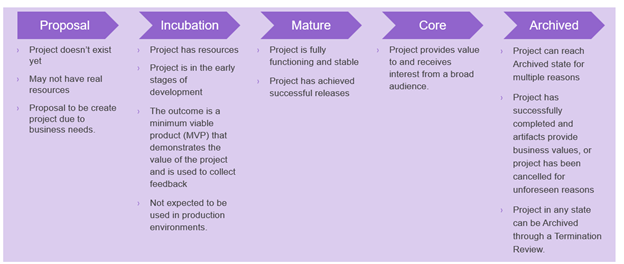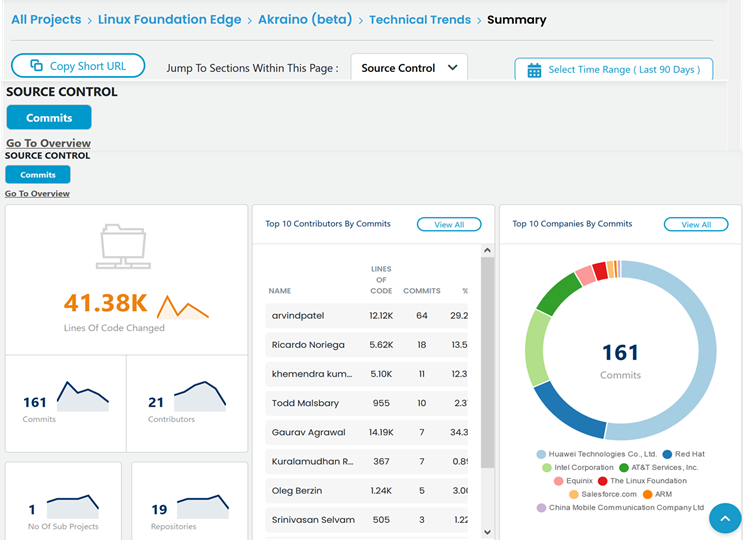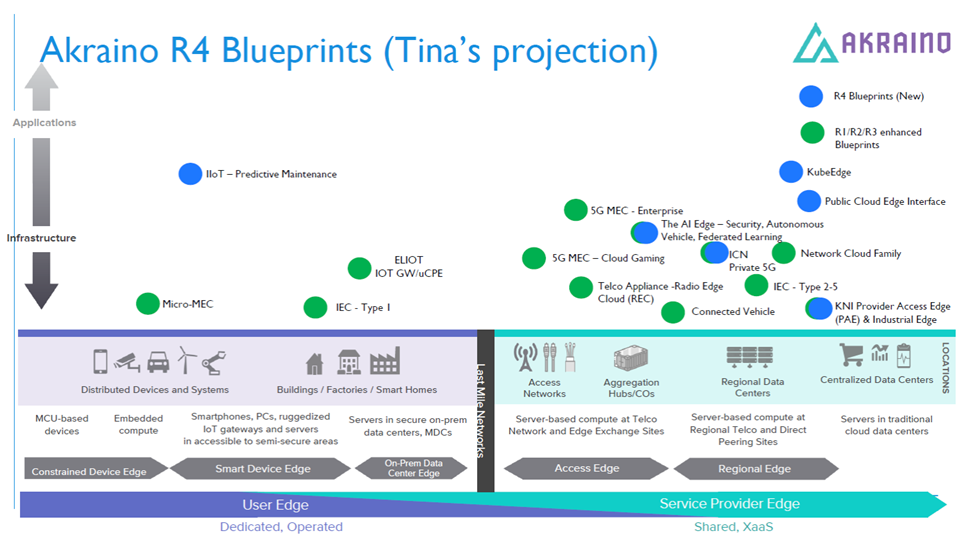Criteria
Supporting Data (if needed, include links to specific examples)
Have a defined governing body of at least 5 or more members (owners and core maintainers), of which no more than 1/3 is affiliated with the same employer. In the case there are 5 governing members, 2 may be from the same employer.
Meets
The Akraino Project Community Guiding Principle is to operate transparently, openly, collaboratively, and ethically. All (Akraino) Project proposals, timelines, and status must not merely be open, but also easily visible to outsiders. The structure of the Akraino Technical Community consists of multiple projects and a Technical Steering Committee (TSC), with 20 members (with few new members elected in 2021), that spans across all projects and with representatives from variety of CSPs (Communication Service Providers) Companies. For detailed information on the Akraino TSC Members and the companies they represent, you may look at the: https://wiki.akraino.org/pages/viewpage.action?pageId=4456453
Have a documented and publicly accessible description of the project's governance, decision-making, and release processes.
Meets
Akraino Community Governance
The Akraino Community functions as an Open Source Project, with a set of rules and leaders elected and approved from within the participants of the project.
The following serve as the official sources for Akraino Governance.
- Akraino Technical Charter which defines the mission, scope, and key provisions of the Project.
- Akraino Technical Community Document which defines the essential business operations of the Project.
Akraino Project Lifecycle States and Reviews
Akraino projects’ life cycles defines five (5) states that projects goes through. A project lifecycle may extend across multiple projects and Akraino releases. The procedure of moving from one state to the next one is independent from the Akraino Release lifecycle and the pace depends on each individual project. In order to effectively review Project progress, four (4) Reviews are built-in to the project life cycle, namely, Proposal, Incubation, Mature, Core (Archived Project state can be assigned for multiple reasons. Either project has successfully been completed and its artifacts provide business values, or project has been cancelled for unforeseen reasons (no value anymore, technical, etc.). Project in any state can be Archived through a Termination Review.

https://wiki.akraino.org/display/AK/Community+Governance
Akraino Technical Community Document
For detailed and/or additional insight information on the Akraino Technical Community Document description, you may look at: https://wiki.akraino.org/display/AK/Akraino+Technical+Community+Document
Have a healthy number of committers from at least two organizations. A committer is defined as someone with the commit bit; i.e., someone who can accept contributions to some or all of the project.
Meets

Demonstrate evidence of interoperability, compatibility or extension to other LF Edge Projects. Examples may include demonstrating modularity (ability to swap in components between projects).
Meets
Adopt the Foundation Code of Conduct.
Meets
Explicitly define a project governance and committer process. This is preferably laid out in a GOVERNANCE.md file and references a CONTRIBUTING.md and OWNERS.md file showing the current and emeritus committers.
Meets
The information input on Akraino Poject Governance provided previously above.
Technical and release decisions for a project should be made by consensus of that project’s Committers. If consensus cannot be reached, decisions are taken by majority vote of a project’s Committers. Committers may, by majority vote, delegate (or revoke delegation) of any portion of such decisions to an alternate open, documented (wiki), and traceable decision making process.Committer Lifecycle. Initial Committers for a project will be specified at project creation. Committer rights for a project are earned via contribution and community trust. Committers for a project select and vote for new Committers for that project.. New Committers for a project should have a demonstrable established history of meritocratic contributions. In the event that a project has no active committers (e.g., due to resignations, etc.), the TSC may appoint an interim Committer from a project’s active Contributors. This term shall last until the next release date, after which time the Committer must stand for election from amongst other Committers on the project to maintain his or her status. In this special case, approval requires a majority of committers who respond within two weeks. If no one responds by the deadline, then the committer status is approved. This provision allows a project to continue development following an unexpected change in personnel.
The method by which the TSC appoints an interim Committer is first by request to the Akraino-TSC email list indicating the request to appoint an interim Committer for a project. After the reception of such an email, the normal TSC decision process applies.
Have a public list of project adopters for at least the primary repo (e.g., ADOPTERS.md or logos on the project website).
Meets
